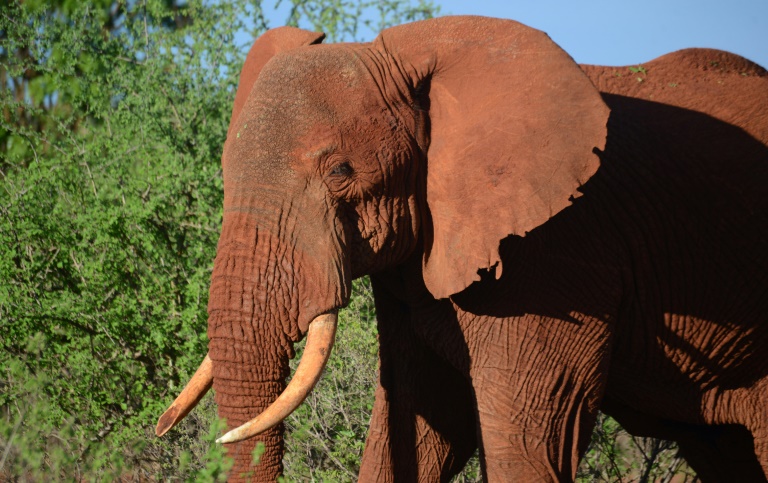Isuzu finally puts sticker price on sharpened-up MU-X
"It's devastating. I've been following them every day of my life for the last year," said Dedan Ngatia, a wild dog researcher in Kenya's central Laikipia region. "They're all dead."
Months of invasions by sometimes armed semi-nomadic herders, and tens of thousands of their livestock, have had a disastrous impact on the wildlife of a region heralded as a conservation success story.
The large-scale walk-ons, driven by drought and politics, have begun to abate thanks to some rain and the completion of last month’s local elections.
Now conservationists are beginning to count the cost.
African wild dogs, elephants, buffalo, lions, giraffes, zebra and antelope have all been affected by shooting, starvation and disease, or by being forced out of their usual habitats.
Canine distemper, a virus most likely caught from the pastoralists’ attendant mongrels, has wiped out scores of endangered wild dogs, including all seven packs studied by Ngatia, an ecologist at Laikipia’s Mpala Research Centre.
Jamie Gaymer, conservation manager at Ol Jogi Ranch where packs of wild dogs roamed, watched as the last pack died, one by one, over the course of a week in July.
“Apart from a few individuals we can basically conclude that the wild dog population has been wiped out, it’s that serious,” he said.
– Security vacuum –


The number of illegally killed elephants has dramatically risen
Elephants have also died at a tremendous rate, with 84 deliberately killed in the first half of 2017, compared to 75 during the whole of 2016, according to data compiled by the Monitoring of Illegal Killing of Elephants (MIKE) programme.
The increase in elephant deaths is “what happens when there is any kind of security vacuum in elephant ranges”, said Max Graham, founder of Space for Giants, a conservation charity based in Laikipia.
“As soon as political stability breaks down, elephants start being killed again.”
While the number of illegally killed elephants has dramatically risen, Graham pointed out that with more than 6,500 elephants in the region, “what was lost was in the order of half on one percent of the total population”.
Chronically endangered rhinos, such as the world’s three last remaining northern whites at Laikipia’s Ol Pejeta Conservancy, have personal armed bodyguards, but most wildlife does not enjoy close protection.
Mugie Conservancy was one of the first to be invaded in late January. Elephants, giraffes and zebra were shot.
“We lost a lot to poaching but nothing compared to disease,” said wildlife manager Josh Perrett, who blames tick-borne diseases brought to Mugie by the pastoralist herds. Mugie’s buffalo population fell from 1,000 to 100; hartebeest antelopes were reduced from 40 to just seven.
One day Perrett found a herd of around 30 impala, clustered dead on the plains. Tests showed they had all contracted anaplasmosis, carried by livestock.
There are just 8,700 reticulated giraffe remaining in the wild
Laikipia is a “stronghold” of the endangered reticulated giraffe, of which there are just 8,700 remaining with 80 percent living in northern Kenya.
Arthur Muneza, East Africa coordinator for the Giraffe Conservation Foundation said giraffes were killed for their meat or their tails –- used as flywhisks or symbols of power –- but the numbers are not yet known.
On Mugie giraffes were used as target practice, or shot in retaliation after pastoralists were evicted.
– ‘Back to square one’ –
The large, illegal influxes of herders and their cattle earlier this year upended the delicate balance between small-scale farmers, large private ranches, wildlife areas and local pastoralists, leaving grasslands picked dry.
A combination of population growth, increasing livestock numbers, poor rains and bad politics led to unprecedented invasions of private land and explosions of deadly violence.
Among the wildlife victims, lions appear to have fared better than most, said Alayne Cotterill, a biologist and founder of conservation and research organisation Lion Landscapes.
But while the 250 or so lions in Laikipia do not appear to have been deliberately killed in large numbers, they have been forced out of their habitual areas by the encroaching herders.
Canine distemper, thought to be spread by dogs belonging to semi-nomadic herders, has devastated the region’s wild dog population
Years of work to reduce the big cats’ access to cattle created “a state of real coexistence between lions and livestock”, which has now been disrupted. The combination of strong, well-fed and protected cattle and ample wildlife prey meant cows were largely “off the menu” for Laikipia’s lions. As a result, fewer lions were being deliberately killed after hunting cattle.
The influx of large herds of weak and poorly-protected livestock has upset that balance.
“We’re back to square one,” said Cotterill.
Although only a handful of shot lion carcasses have been reported, no survey has yet been undertaken and Cotterill warns that those found will only be “the tip of the iceberg”.
The situation is bad, but not irreversible, scientists and conservationists say. In 2006, for example, an outbreak of canine distemper all but wiped out Laikipia’s wild dogs but the few that survived developed immunity and went on to foster new packs and the population rebounded.
“Whilst this is tragic at the outset, we know that strong populations can grow quickly out of small numbers of dogs,” said Annabelle Carey, a safari operator who runs Laikipia Wilderness Camp and specialises in tracking wild dogs.
As stability returns to Laikipia, so too will the wildlife.
Download our app